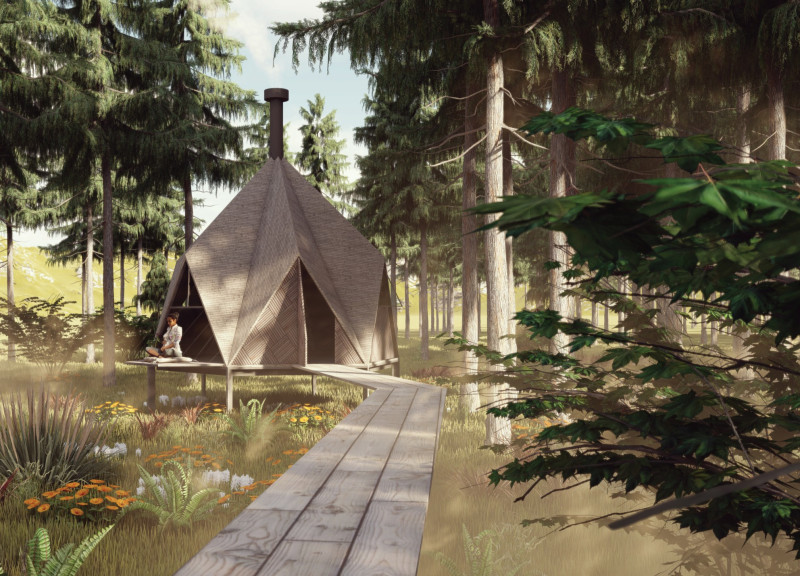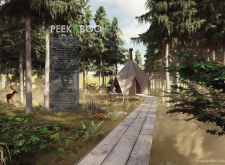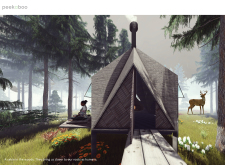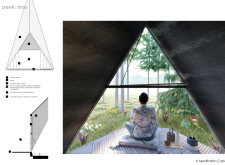5 key facts about this project
The cabin is characterized by its unique octagonal footprint, a design choice that facilitates both spaciousness and fluid movement within the interior. This shape allows for multiple vantage points, enabling occupants to enjoy the surrounding landscape from different perspectives. One of the most notable design features is the incorporation of drop-down wings that frame the views of the forest, enhancing the meditative experience by bringing the outside in. These wings can be adjusted, allowing users to control the light and openness of the space as they engage in their meditation practices.
Material selection is paramount in this project, with a focus on sustainability and aesthetic continuity. Natural wood siding wraps the cabin, delivering a warm, inviting texture that complements the forest's organic qualities. Moreover, stainless steel cables are used to support the meditation wings, showcasing both strength and elegance without overwhelming the overall design. The presence of large glass panels provides flexibility in ventilation while maximizing views, fostering a feeling of spaciousness and connection to nature.
Inside, the layout is thoughtfully arranged to enhance the experience of users. The cabin includes a twin bed for resting, a storage shelf, and a desk for personal items—all arranged to maintain an atmosphere of tranquility and minimalism. The design prioritizes functionality without compromising the serene ambiance essential for meditation and relaxation. It promotes a fluid transition from the interior to the outdoor environment, reinforcing the cabin's purpose as a place for retreat and solace.
The meditation cabin’s approach to design is notable for its emphasis on environmental synergy. By utilizing locally sourced materials and employing low-impact building practices, the project respects and integrates into the surrounding ecosystem rather than imposing on it. This sensitivity to place is a crucial aspect of the design, highlighting the importance of sustainability in contemporary architecture.
The "Peek-a-Boo" meditation cabin exemplifies a modern architectural philosophy that values simplicity, functionality, and ecological mindfulness. It represents a thoughtful response to the increasing need for spaces that facilitate pause and reflection in our fast-paced world. The innovative use of materials and design strategies encourages a dialogue between occupants and their environment, allowing for an enriching experience.
For those interested in exploring the detailed aspects of the architectural plans, sections, and overall design concepts of this project, further investigation into the presentation is encouraged. Engaging with the architectural ideas and details will provide a more profound understanding of how this cabin embodies the principles of mindful design and sustainable living.


























